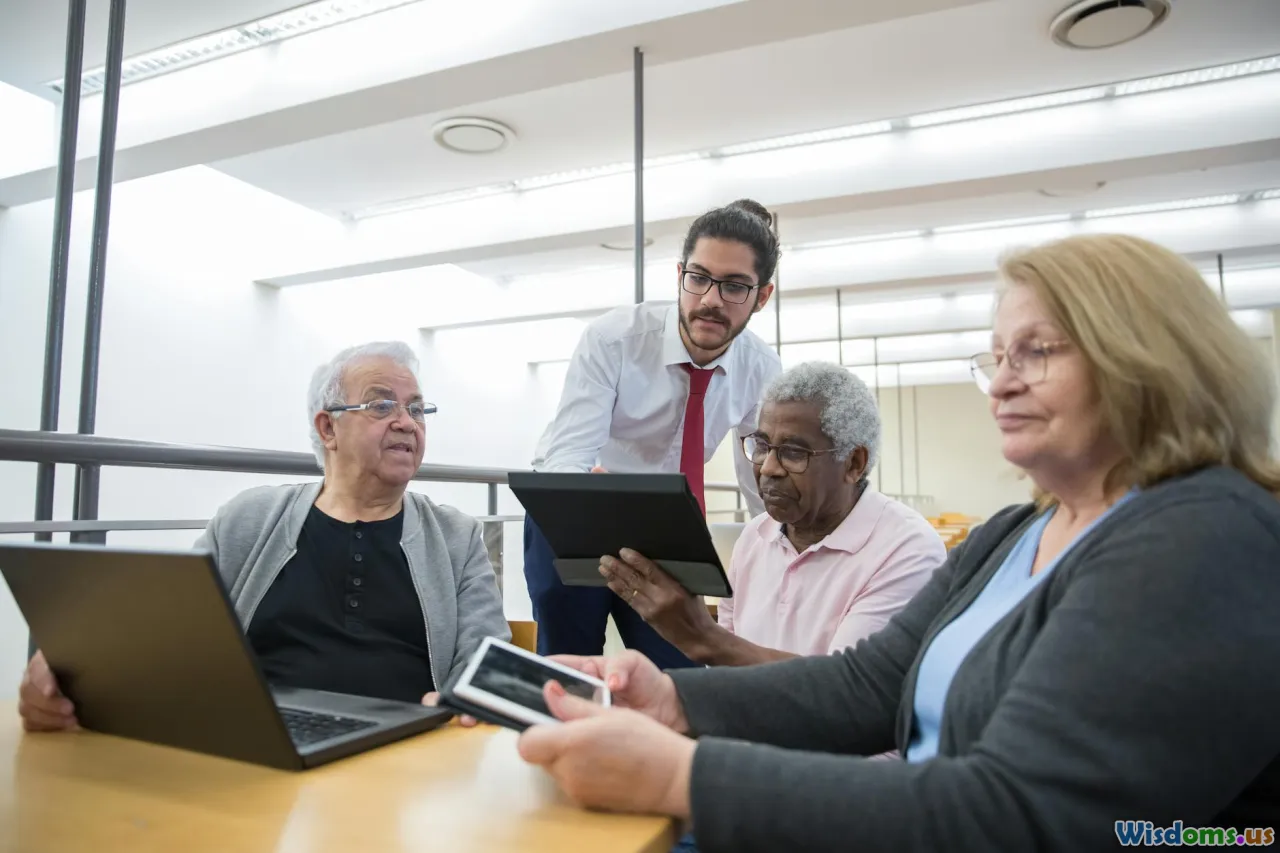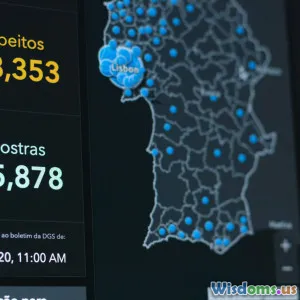
How Digital Evidence Sharing Unites Police and Cyber Units
17 min read Explores how sharing digital evidence strengthens collaboration between police and cyber units, enhancing investigations and improving public safety. (0 Reviews)
How Digital Evidence Sharing Unites Police and Cyber Units
In today's highly connected world, crime increasingly knows no boundaries—nor does evidence. The proliferation of cybercrime, from ransomware attacks crippling local governments to coordinated financial fraud and digital stalking, demands joint action from traditional law enforcement and specialized cyber units. Digital evidence sharing, once a pipe dream cloaked by technical hurdles and jurisdictional silos, now stands at the center of modern policing strategy. By facilitating seamless cooperation, digital evidence networks empower police and cyber units to act swiftly, break criminal chains, and deliver justice in the digital age.
The Evolving Landscape of Digital Evidence

Digital evidence isn't just about obvious data sources like hard drives or cell phones. It encompasses a diverse spectrum: cloud storage, smart home devices, emails, social media messages, even residue metadata from printers and GPS trackers. According to the 2023 INTERPOL "Digital Forensics Readiness Survey," over 74% of police departments encountered cases where analyzing digital evidence was essential—far outpacing traditional physical forensics for major crimes.
An example stands out: The 2019 coordinated bust of an international SIM swap ring in Europe involved both seizing laptops and tracing cryptocurrency transactions. Physical detectives and cyber analysts had to analyze device logs, correlate phone records, and work with IT specialists to crack encrypted files across multiple countries. This success story underscores a core truth—digital evidence is almost never siloed in modern investigations. Instead, it threads together physical crime scenes and digital footprints, requiring a seamless bridge for collaboration.
Breaking Down the Barriers: Traditional Challenges in Evidence Sharing

Despite its promise, digital evidence sharing faces significant obstacles:
- Technical Incompatibility: Different agencies often use proprietary software, incompatible databases, or outdated file formats. A forensics report generated on one tool might be unreadable in another's system.
- Legal and Policy Gaps: Privacy laws, chain-of-custody requirements, and data protection regulations can vary—even across counties—slowing cross-jurisdictional evidence transfers.
- Communication Silos: Without a shared framework, vital intelligence can languish in email inboxes or unindexed drives while investigations stall.
A 2022 report from the National Institute of Justice found that 61% of U.S. law enforcement agencies struggled with sharing digital evidence outside their immediate network. This lack of interoperability had tangible, detrimental effects: cyber units with crucial decryption keys had no secure channel to pass files to field officers, hamstringing investigations of child exploitation and human trafficking.
Unified Digital Platforms: Turning Concept Into Reality

Emerging unified platforms are transforming how police and cyber units coordinate. Tools like Microsoft Azure's Digital Evidence Management, Magnet AXIOM's cloud solutions, and INTERPOL's Cyber Fusion Centers codify best practices into real, usable workflows:
- Centralized Storage – Evidence from multiple cases can be uploaded, tagged, and accessed securely by authorized units.
- Automated Metadata Tracking – Every transaction (download, transfer, decryption) is logged, streamlining audit trails and ensuring legal defensibility.
- Granular Access Control – Investigators only see files relevant to their jurisdiction, while sensitive data remains protected under strict policies.
Consider the UK's Police Digital Service, whose National Digital Evidence Repository goes beyond simple file shares. It cross-references evidence against regional crime databases, automates cross-border notifications, and runs AI-driven searches to identify case links across counties. In 2023, during Operation Connector—a large-scale coordinated takedown of online drug marketplaces—the platform enabled 200 different agencies to access shared data without ever putting evidence integrity at risk.
Real-World Success Stories: What Collaboration Looks Like

Operation Ghost Shell: International Ransomware Response
In late 2021, several city governments across Europe and the U.S. fell victim to the "LockBit" ransomware strain. Local police had little technical oversight, but cyber units spotted telltale patterns in the encrypted files. By swiftly compiling file samples and attack logs via INTERPOL's I-24/7 Secure Cloud, agencies flagged identical ransom notes, cryptographic hashes, and dropped payloads, linking hundreds of incidents. The result: a superseding international warrant and the eventual shutdown of key LockBit operators.
Online Predator Tracking: Fast Action, Real Lives Saved
When a California cyber unit identified a dangerous online predator exploiting children via a hidden app, time was critical. Traditional protocols could have delayed data handoff by days or weeks, but the city’s digital evidence sharing protocol allowed the cyber analysts to pass crucial chat logs and server address data straight to local detectives. Real-time collaboration between the units not only secured an arrest but also enabled coordinated outreach to multiple victims across state lines within hours.
From Reactive to Proactive Policing: Intelligence-Driven Benefits

Beyond streamlining investigation workflows, digital evidence sharing empowers a shift to intelligence-led policing. Agencies syncing their digital evidence pools can surface hidden trends, discover new suspects, and deploy resources earlier. Three key benefits stand out:
-
Pattern Recognition: AI and machine learning can comb through enormous digital evidence silos to highlight recurring IP addresses, social media handles, or forged document templates—connecting cases that might otherwise escape notice.
-
Threat Anticipation: With shared threat metadata, warnings about new malware strains or scam campaigns propagate in real time.
-
Resource Allocation: Chiefs can prioritize high-risk areas by analyzing the density and frequency of digital crime patterns city-wide.
For example, the Europol Digital Platform for Law Enforcement (EDPL) recently enabled analysts to discover a repeating series of banking malware attacks. With regional cyber units feeding data into a shared pot, they identified both the attack vectors and the criminal organizations behind them. This led to preemptive security bulletins that protected smaller police districts previously unaware of the threat.
Protecting Privacy and Chain of Custody

Rushing to share evidence can create a new category of risks, especially in data-heavy, consumer-tech-involved cases. Successful systems handle these challenges head-on:
- Encryption at Rest and in Transit: Top-tier solutions enforce end-to-end encryption, minimizing risk if a transmission or device is ever compromised.
- Audit Logging: Every access—who, when, what—gets recorded and time-stamped. This is vital should a defense attorney ever challenge the integrity of evidence in court.
- Two-Factor Authentication: User access to digital evidence archives is restricted via secure passwords plus token or biometric verification.
- Automated Redaction: Privacy can be protected by blurring faces or omitting non-relevant personally identifiable information (PII) before broader file sharing.
In a high-profile 2022 cyber-libel case in Singapore, a central evidence management system helped prosecutors safely transmit messages between WhatsApp, Facebook, and several email accounts while fulfilling the court's privacy demands. All transmissions were logged and encrypted, ensuring neither privacy nor legal chain of custody was compromised.
Training the Human Element: Skills and Cultural Shift

No software alone can unite police and cyber units—the people behind the screen matter most. Successful evidence-sharing operations require:
- Digital Fluency: Patrol officers and detectives need training programs on extracting, handling, and transferring digital evidence just as meticulously as physical fingerprints.
- Cross-Team Workshops: Joint exercises dissolve barriers and help units understand each other's strengths. For instance, field techs learn about forensic frameworks like FTK/EnCase, while cyber analysts train to spot signs of classic street crime with digital origins.
The U.S. National White Collar Crime Center’s "Cybercops" simulation is a testament to this approach. It brings together city police and cybercrime specialists for scenario-based exercises—mocking everything from server seizures at crime scenes to chain-of-custody digital handoffs in a virtual setting. Officers report marked improvements in case closing rates post-training, indicating the transformational power of shared understanding.
Overcoming Cross-Border and Multi-Agency Obstacles

International cybercrimes bring a special set of complications. Differing laws governing what data can be shared, how quickly evidence must be preserved, and when suspects can be extradited all threaten to stall even the most determined investigation. Organizations like INTERPOL, Europol, and the G7 have responded by crafting:
- Mutual Legal Assistance Treaties (MLATs): These treaties streamline how digital evidence requests and transfers occur internationally. The 24/7 point of contact system, for example, ensures round-the-clock emergency requests get the fastest possible response.
- Unified Data Formats: Even mundane protocol questions like which video codec or archive standard to use can matter. Collaborative networks define baseline formats and workflows so evidence is always readable between countries.
- Secure International Portals: INTERPOL’s I-24/7 Digital Evidence Exchange doubles as both a communication and a compliance platform, providing templated legal forms as well as secure transfer tools.
In one striking success, French and German police worked together in 2022 to trace a serial online extortionist. Secure cross-border evidence sharing allowed technical and case evidence to move between agencies despite different languages and technical protocols—resulting in a coordinated arrest and tools now adopted for future cases across Europe.
Best Practices for Agencies Enabling Digital Evidence Sharing

For agencies contemplating or improving their digital evidence capabilities, a set of best practices has emerged:
- Establish Clear Chain-of-Custody Policies: Document every step, from data acquisition to transfer—covering timestamps, who handled what, and why.
- Embrace Modular, Scalable Systems: Prioritize interoperable tools rather than vendor lock-in. Support open standards like EDRM XML or standardized database outputs.
- Embed Privacy Protocols from the Ground Up: Automatically redact sensitive data, compartmentalize access, and align with both local and international privacy standards, such as GDPR.
- Foster a Culture of Joint Training: Invest regularly in "cross-pollination" exercises—send cyber analysts to ride-alongs, let tech staff consult on physical raids, and run regular digital chain-of-custody drills.
- Plan for Scalability and Disaster Recovery: As digital evidence volumes swell, ensure cloud or hybrid models offer robust backup, quick restoration after breaches/outages, and future growth capacity.
Following these guidelines, South Korea’s National Police Agency set up a multi-agency digital evidence platform in 2023 that managed over 200,000 files from hundreds of raids—reducing manual paperwork and cross-checking workloads by 70% within a single year.
Looking Forward: The Future of Policing is Shared and Digital

The stakes of digital evidence sharing go beyond faster investigations or technological convenience. In a world where cyber and physical crime merge—from romance scams escalating to real-world violence to sophisticated ransomware gangs holding city services hostage—bridging the operational divide between police and cyber experts is essential for security and justice. By enabling secure, fast, and intelligent exchange of digital evidence, agencies not only solve cases in record time—they build resilient defenses ready for new threats.
As emerging technologies like AI, federated learning, and quantum-secure communications hit law enforcement, expect even tighter, smarter collaboration between teams. Ultimately, digital evidence sharing is not just an IT feature—it's the connective tissue of 21st-century policing, bringing together skills, insights, and communities dedicated to public safety in the digital era.
Rate the Post
User Reviews
Other posts in Cybersecurity
Popular Posts

















